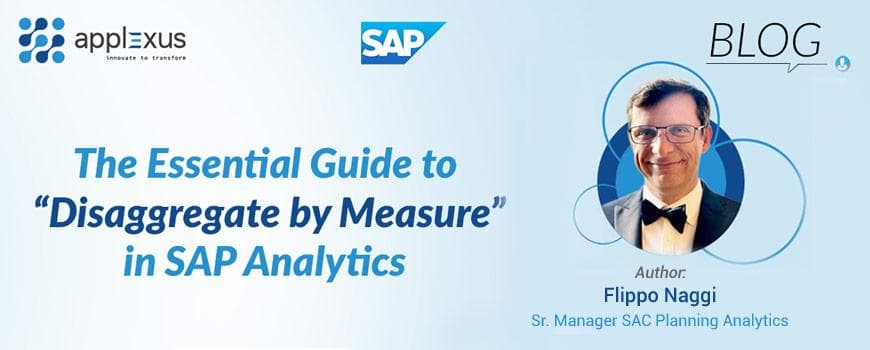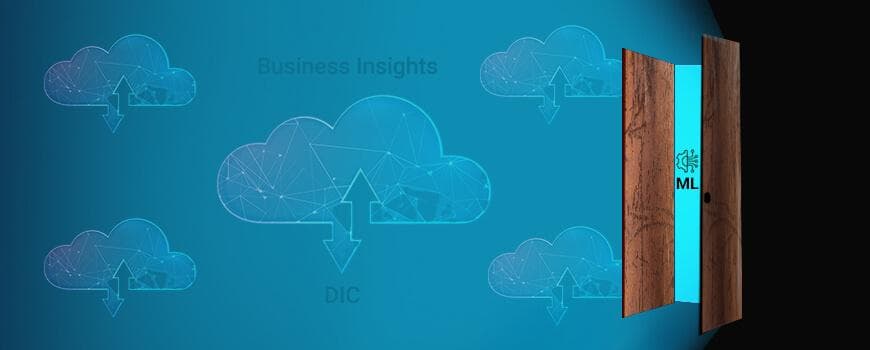Market Basket Analysis in Retail & CPG Analytics to Increase Sales Revenue and Market Share
19 April 2021


Buntic Georgian
Data Strategist & AdvisorBuntic Georgian is the Vice President of Analytics at Applexus. With over 22 years of SAP consulting experience primarily focused on SAP Business Analytics and Advanced...
Market basket analysis, as used in business intelligence, is a set of statistical affinity calculations that helps retailers better understand and assist their customers through forecasting their purchasing habits over the time. Affinity Analysis (also known as Market Basket Analysis) seeks out the purchasing trends to gain useful customer information by determining which items are commonly bought together in order to identify connections between purchases so that retailers can maximize their cross-selling opportunities.
For e.g.: in a market basket analysis, the retailers look for product combinations that regularly co-occur in transactions. People, who buy flour and casting sugar, may also buy eggs (because a high proportion of them are planning on baking a cake).
Online retailers often associate it with phrases like "customers who purchased this item also bought" or Netflix's "See what’s next." With the consumers and retailers becoming heavily reliant on recommendation engines for incremental purchases, market basket analysis is emerging as the key driver of upselling and cross-selling in eCommerce.

Market Basket Analysis
Market Basket Analysis (MBA) assists retailers in monetizing customer behavior by analyzing purchasing patterns and influencing purchasing decisions through predicting the consumer buy decisions with confidence. The MBA algorithms experiment with "what-if" scenarios regarding assortment modifications to discover the cross-selling opportunities and innovative planogram ideas for surgically precise item promotion for retailers.
Apriori algorithm powered by SAP HANA® Predictive Analysis Library
The Apriori algorithm (AA) is considered the heart of market basket analysis. The Apriori algorithm is a data mining method for detecting the database's regular itemsets and related association rules and is made up of three main components: support, confidence and lift. It also looks for periodic item-set correlativity across the entire transactional database.
The following are some of the algorithm's fundamental concepts:
Itemset – An itemset is the total number of items purchased by a customer in a single session, as the name suggests. It holds values ranging from zero (null) to n, according to the If (*) =Then (*) rule (all items)
![]()
Support – In market basket analysis, support refers to the frequency with which an item appears in a given range. This is commonly referred to as a probability count and is expressed numerically as:

Confidence - Confidence count is the ratio of the number of transactions that include the subsequent item (the conditional purchase—in this case, the item that is purchased when the first item is purchased) to the total number of transactions in market basket analysis. This can also be expressed numerically, as:

Lift Ratio- When calculating results, the lift ratio is defined as the accuracy and efficiency of the rules set in support and confidence when compared to a random set of transactions. A lift ratio greater than one is generally considered useful, whereas a lift ratio less than one is generally considered incorrect. The higher the lift ratio, the better the accuracy of the item association. Lift ratio is often expressed as a numerical value, similar to support and confidence.

In other words, if a customer buys something from the milk and juice subclasses, it is likely that he or she will also buy something from the cereal subclass. Once a rule is well-defined, a user may use the AA interface to determine the strength of the affinity using confidence and support. The support percentage is the likelihood that a customer will buy milk, juice, and cereal, while confidence is the conditional probability that they will buy cereal if they buy milk and juice. In the transaction history, rules with a high support value appear regularly, while rules with a high confidence value indicate a strong affinity between products.

Users can start taking action based on these patterns, as well as the needs and goals of their product category, once they've recognized sale patterns. Assume a retailer is tasked with increasing margin dollars in the cereal category. Using the affinity rule from the previous example, the merchant may collaborate on a milk promotion with the dairy category to boost milk sales. As a result, cereal sales rise without sacrificing margin dollars through a cereal promotion. Note that in some cases, this may necessitate cross-category planning, as product affinities may occur between seemingly unrelated products (such as grocery and beverages).
The product assortments in supermarkets are another component of market basket analysis. AA makes assortment recommendations that increase a category's revenue or margin by recommending product additions or removals based on product affinities and sales history. If a product is found to be too similar to other products in the assortment, it may be recommended that it be removed. Products that are not similar to any other items in the assortment, on the other hand, maybe candidates for inclusion because they will not detract the consumers from existing sales.
Market Basket Analysis Resultset Example

For instance, in the above resultset Burger Meat is showing positive co-relation with Beer, Carbonated Drinks and Pickles (values greater than 1) and negative co-relation with Fruits and Seasonal Products. This could lead us to further promote (& stock up on) carbonated drinks, pickles and beer - when a promotion is run on Burger Meat - because of the increased likelihood that customers will purchase these items at the same time. Similarly Ice Cream has negative co-relation with Beer and positive with Fruits. So the MBA analysis is able to provide more insights into the product relationships and help us understand which products sell well together and not sell well together.
Benefits of Market Basket Analysis for Retailers
Retailers leverage market basket analysis to identify combinations of goods or menu items that regularly co-occur in transactions to uncover associations between what your customers are buying to create new products and pricing models to generate new revenue streams.
MBA insights can be applied in a variety of ways by retail stores including:
- Recommendations: Recommend related products that are commonly purchased together in web stores. “Customers who bought this item also viewed this...”
- Marketing Promos: Target marketing strategies at consumers to persuade them to buy related goods to what they've already bought. (e.g. target customers who buy cereals with offers on milk, to encourage them to spend more on their shopping basket)
- Store layout: Put products that co-occur together close to one another, to improve the customer shopping experience
This type of analysis can be used by online retailers to:
- Drive recommendation engines (e.g. suggesting to the visiting customers that other customers who bought this product also bought these products.)
- Market campaigns to a particular audience (e.g. emailing customers who bought specific products with other products, the offers that are likely to be interesting to them.)
- Informed product placements (to determine the location of content items on the media sites or products in the catalog.)
Market basket analysis is being used by an increasing number of companies to obtain useful insights into associations and hidden relationships. A predictive version of market basket analysis is making inroads across many industries to detect sequential purchases, as industry leaders continue to investigate the technique's value. It's important to remember that it can be used in a variety of other situations too.
Market Basket Analysis Can Be Used For a Variety of Other Purposes
MBA is applicable in a variety of areas, in addition to its popularity as a retail strategy:
- Predictive analysis of equipment breakdown in the manufacturing
- Discovery of co-occurrence patterns between diagnoses and pharmaceutical active ingredients administered to diverse patient groups in pharmaceutical/bioinformatics
- In Financial criminology to track credit card usage data to detect fraud
Promotion Decision Desk Solution by Applexus Technologies
The Promotion Decision Desk solution, offered by Applexus Technologies, incorporates many of the above-listed use cases into a single, flexible analytics solution. Using the SAP Analytics Cloud platform combined with the SAP HANA EDW for leveraging the HANA PAL libraries, the Promotion Decision Desk helps your business identify and target specific candidates for Promotion & rank them based on business-specific values & weightages.
Read more on how Applexus Promotion Decision Desk solution helps the retailers and CPG companies to overcome the challenges in deciding which products to promote for better sales in our upcoming blogs.












